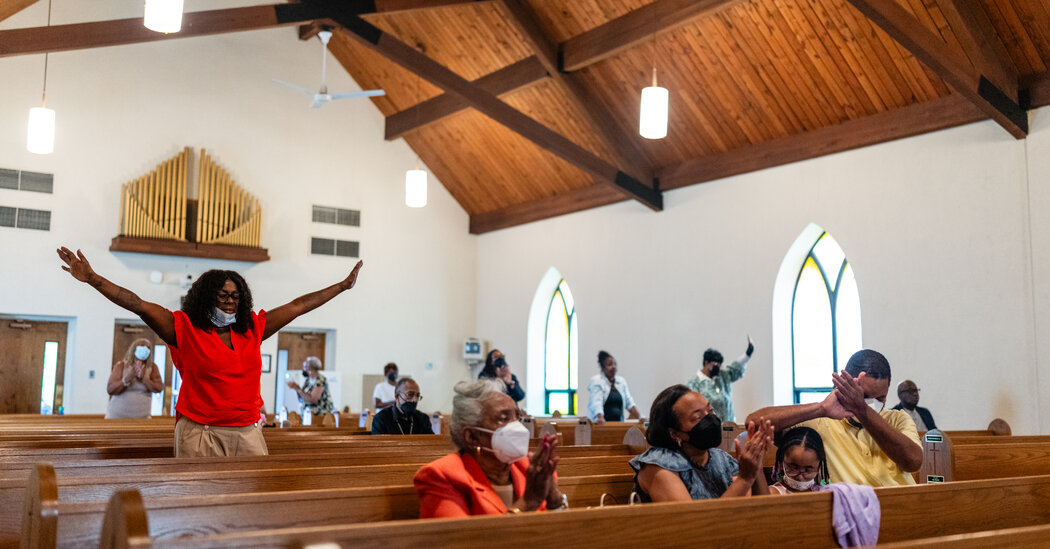
On a Sunday morning, about 100 worshipers gathered for services at Mother Bethel African Methodist Episcopal Church in Philadelphia.
The choir filled the room with verses from “Pass Me Not, O Gentle Savior.” The kick drum thumped. The high hat ticked. And the audience punctuated the hymn with the syncopated double clapping often heard in Black churches. Some of the congregants sang with masks over their faces. But as the crowd nodded along to the testimony and sermon that day, the church is facing a challenge: The congregation is getting older, with few young people in the pews.
Mother Bethel is the birthplace of the A.M.E. church, a major denomination of the Black Protestant tradition.
Its pews were once packed.. During the Great Migration in the 1920s, Mother Bethel’s membership peaked at about 4,000, according to the Rev. Mark Tyler, 58, who has led the church for the last 16 years. The decline has been slow but devastating: Today, it has about 700 members, with about 300 regular in-person churchgoers.
Black churches across the country are struggling to get younger congregants through their doors. Church membership has plunged among Black adults by almost 20 percentage points in the last two decades, according to Gallup. And among the Black Millennials and members of Generation Z who do attend religious services, about half do so at majority Black churches, compared with two-thirds of Black baby boomers and members of the Silent Generation, according to a Pew Research Center survey.
Though many houses of worship across America are struggling with falling membership, the singular standing of the Black church means that its declining numbers have far-reaching consequences for social cohesion and Black political power writ large.

